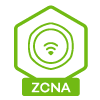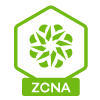How to Configure Link Aggregation on Nebula switch?
 Zyxel Employee
Zyxel Employee



Background:
Link aggregation, also known as port trunking or bonding, allows you to combine multiple network interfaces into a single logical interface. This technique enhances network performance, provides redundancy, and improves overall bandwidth utilization. Zyxel networking devices offer robust link aggregation capabilities, empowering you to optimize your network connectivity. In this guide, we will explain how to configure link aggregation on Zyxel networking devices.
Topology and Scenario:
Consider a scenario where you have a network setup with Zyxel switches and multiple devices requiring high-bandwidth connections. By configuring link aggregation, you can combine multiple physical links between devices, such as switches and servers, to create a higher-bandwidth aggregated link. This setup ensures efficient data transmission and avoids bottlenecks, benefiting bandwidth-intensive applications like data centers, video streaming, and file transfers.
Steps:
In Configure > Switches > Switch ports, Aggregate button.
Please note that there are two types of link aggregation available on Nebula. The static aggregation does not require any corresponding settings to be configured on the peer device. However, for LACP (802.3ad) aggregation, it is necessary to configure it on both sides for the link to establish a connection. Otherwise, the link will remain blocked.
Additionally, please ensure that the configurations of the selected ports are the same, including the port speed, media type, and bandwidth control. If the settings are not identical, you will notice that they are grayed out.
Note: We recommend connecting the link first and then doing the configuration.
After that you will see the 2 ports have been binding together, here we use ports 3 and 4 for instance.
Categories
- All Categories
- 441 Beta Program
- 2.9K Nebula
- 208 Nebula Ideas
- 127 Nebula Status and Incidents
- 6.4K Security
- 532 USG FLEX H Series
- 333 Security Ideas
- 1.7K Switch
- 84 Switch Ideas
- 1.3K Wireless
- 51 Wireless Ideas
- 6.9K Consumer Product
- 293 Service & License
- 461 News and Release
- 90 Security Advisories
- 31 Education Center
- 10 [Campaign] Zyxel Network Detective
- 4.7K FAQ
- 34 Documents
- 86 About Community
- 99 Security Highlight


